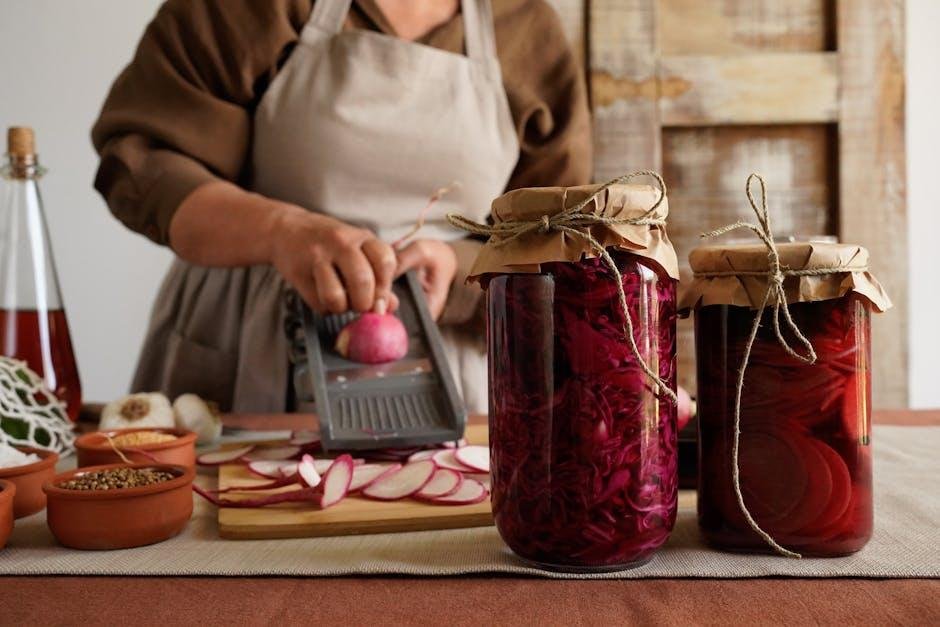When it comes to preparing meals, the method you choose can significantly impact the nutrient content of your food. Slow cooking has gained popularity not just for its convenience and rich flavors, but also for its ability to preserve essential vitamins and minerals. Unlike high-heat cooking techniques, slow cooking gently transforms ingredients over a longer period, helping to retain more nutrients and enhancing the overall health benefits of your meals. In this article, we’ll explore how slow cooking works to preserve nutrients and why it might be a smart choice for those looking to maximize the nutritional value of their food.
Table of Contents
- Understanding the Science Behind Nutrient Preservation in Slow Cooking
- Comparing Nutrient Retention Between Slow Cooking and Other Methods
- Tips for Maximizing Nutrient Content When Using a Slow Cooker
- Best Ingredients and Recipes to Enhance Nutrient Absorption in Slow-Cooked Meals
- Concluding Remarks
Understanding the Science Behind Nutrient Preservation in Slow Cooking
Slow cooking operates at significantly lower temperatures compared to traditional methods like boiling or frying, which helps retain the structural integrity of sensitive vitamins and minerals. For instance, heat-sensitive nutrients such as vitamin C and various B vitamins are less prone to degradation because the food is cooked gently over an extended time. Furthermore, the sealed environment of a slow cooker minimizes exposure to oxygen, reducing oxidative loss and preserving the antioxidant properties of ingredients. This controlled thermal environment ensures that while flavors develop deeply, the nutritional value remains largely intact.
Another critical factor is the retention of nutrients due to minimal water usage during slow cooking. Unlike boiling, which leaches vitamins and minerals into cooking water that is often discarded, slow cooking uses limited liquid and typically serves the food with its own cooking juices. This means:
- Water-soluble vitamins stay in the dish rather than being lost.
- Essential minerals and phytochemicals are preserved in the natural juices.
- The gradual cooking process allows for better absorption of nutrients by the body.
Overall, the science of slow cooking highlights how this method not only enhances flavor but also safeguards the nutritional benefits, making your meals healthier and more wholesome.
Comparing Nutrient Retention Between Slow Cooking and Other Methods
When it comes to nutrient preservation, slow cooking stands out by maintaining a gentle heat that safeguards vitamins and minerals often lost in other cooking techniques. Unlike boiling or frying, which can expose food to intense temperatures or lengthy cooking times that degrade sensitive nutrients like vitamin C and certain B vitamins, slow cooking uses prolonged, low heat to minimize nutrient breakdown. This method also reduces the leaching of water-soluble vitamins into cooking liquids, especially when these liquids are consumed as part of soups or stews, maximizing nutrient intake.
In comparison to methods such as grilling or microwaving, slow cooking offers several advantages:
- Retention of antioxidants: Gentle heat protects delicate phytonutrients that are easily destroyed by high heat.
- Improved mineral availability: The slow process enhances the breakdown of tough fibers, making minerals more accessible for absorption.
- Reduced formation of harmful compounds: Unlike grilling or frying, slow cooking limits the generation of acrylamide and polycyclic aromatic hydrocarbons (PAHs).
- Better flavor infusion: Prolonged cooking allows spices and herbs to penetrate deeply, potentially reducing the need for excessive salt or fat.
These factors make slow cooking a compelling choice for those aiming to prepare healthful and nutrient-rich meals.
Tips for Maximizing Nutrient Content When Using a Slow Cooker
To truly harness the benefits of slow cooking and maximize nutrient retention, start with fresh, high-quality ingredients. Vegetables packed with antioxidants—like carrots, spinach, and bell peppers—retain more nutrients when added later in the cooking cycle. This minimizes their exposure to heat and water, preventing the loss of delicate vitamins such as vitamin C and folate. Additionally, using minimal amounts of liquid ensures that water-soluble vitamins remain in the dish rather than leaching out and being discarded.
Consider these simple practices for nutrient-rich meals:
- Chop vegetables into larger pieces to reduce surface area and nutrient loss.
- Use the slow cooker’s lid properly to trap steam and protect sensitive nutrients from oxidation.
- Incorporate nutrient-dense herbs and spices towards the end to preserve their bioactive compounds.
- Limit pre-browning or extended cooking times when unnecessary, as excess heat can degrade vitamins.
Best Ingredients and Recipes to Enhance Nutrient Absorption in Slow-Cooked Meals
Incorporating the right ingredients can significantly boost the bioavailability of nutrients in your slow-cooked meals. Foods rich in healthy fats like avocado, olive oil, and nuts help the body absorb fat-soluble vitamins such as A, D, E, and K. Additionally, spices like turmeric and black pepper not only add depth of flavor but also contain compounds that enhance nutrient absorption—curcumin in turmeric is better absorbed in the presence of black pepper’s piperine. Fermented ingredients like kimchi and miso introduce beneficial probiotics which can improve gut health, further aiding in the digestion and absorption of minerals.
For recipe ideas that harness the full potential of slow cooking, consider pairing iron-rich meats or legumes with vitamin C-rich vegetables like bell peppers, tomatoes, or broccoli. This combination can increase iron uptake and improve overall nutritional value. Slow-cooked stews, casseroles, and soups that marry these elements allow the flavors to meld while preserving delicate nutrients. Experiment with layering fresh herbs such as parsley or cilantro at the end of cooking—this not only enhances the aroma but also adds antioxidants and vitamins that might diminish during prolonged heat exposure.
Concluding Remarks
Incorporating slow cooking into your meal routine can be a simple yet effective way to preserve the nutrients in your food while enjoying rich, flavorful dishes. By cooking at lower temperatures over extended periods, slow cooking minimizes nutrient loss that often occurs with high-heat methods. Whether you’re simmering stews, roasting vegetables, or preparing beans, this gentle technique helps retain vitamins and minerals, making your meals both delicious and nourishing. So next time you plan your cooking strategy, consider the benefits of slow cooking—not just for convenience, but also for supporting your overall health through better nutrient preservation.
Related Products
-
Sale!
OGX Renewing + Argan Oil of Morocco, Cold-Pressed …
Beauty Original price was: $10.69.$7.97Current price is: $7.97. -
Raise Them Well Mom Multi+ Daily Multivitamin for …
Mom $27.99 -
Sale!
Men’s Bomber Jacket Fashion Stylish Lightweight Wi…
Clothing Original price was: $39.99.$32.99Current price is: $32.99.







